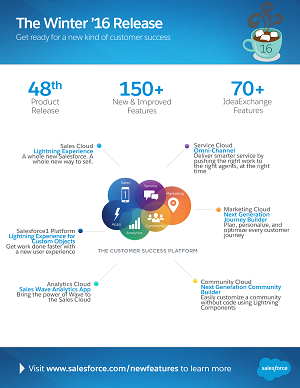News
Salesforce Previews IoT Cloud, Based on Open Source Components
- By David Ramel
- September 18, 2015
At its big Dreamforce conference in San Francisco this week, Salesforce unveiled its upcoming IoT Cloud, based on a massively scalable, real-time event processing engine called Thunder that leverages several open source components for Big Data analytics of information collected by the Internet of Things (IoT).
"IoT Cloud empowers businesses to connect data from the Internet of Things, as well as any digital content, with customer information, giving context to data and making it actionable -- all in real-time," the company said in a statement. "Thunder, built on a massively scalable, modern architecture, can 'listen' to the connected world, ingesting billions of events a day, from any source." Thunder works with Lighting, which was previously unveiled by the company, as John K. Waters reported on Redmondmag.com yesterday. Lightning, he wrote, "is built on the Salesforce1 platform and has a new user interface, and combines several tools, including the new Lightning Design System, Lightning App Builder and Lightning Components." Now, joining Lightning, is Thunder.
Although the company has published little information on Thunder -- not scheduled for availability until next year -- it's reportedly based on open source data-processing components under the stewardship of the Apache Software Foundation (ASF), including the Cassandra distributed database, Kafka messaging broker, Spark data-processing engine and Storm distributed realtime computation system.
"Salesforce is turning the Internet of Things into the Internet of Customers," said Salesforce exec Marc Benioff. "The IoT Cloud will allow businesses to create real-time 1:1, proactive actions for sales, service, marketing or any other business process, delivering a new kind of customer success."
 [Click on image for larger view.]
Salesforce Plans for Next Year (source: Salesforce)
[Click on image for larger view.]
Salesforce Plans for Next Year (source: Salesforce)
Salesforce said the IoT cloud will be in a pilot program in the first half of next year, with general availability coming later, along with pricing information.
"With IoT Cloud, you have to give it to Salesforce for taking the rocket science out of data science and bringing IoT analytics to the masses," said IDC analyst Al Hilwa in an e-mail to ADTmag. "That top technology companies like Microsoft and Cisco are using it is a strong endorsement of the power under the covers."
When asked about the possible open source aspects of Salesforce's moves -- with everyone from Facebook to Microsoft becoming increasingly involved in the open movement -- Hilwa said that doesn't appear to be planned for the company's new products ... yet.
"They have built a strong processing engine behind it and do rely on open source components inside," Hilwa said. "However, they are not contributing what they developed to open source yet. Salesforce is doing more and more in open source and is engaged in projects where they contribute. I think there is a progression and long-term shift taking place with the company. I have certainly seen a lot more open source maturity since the Heroku acquisition."
And even though the new Salesforce offerings aren't open source, they are targeting customers beyond its own user base. "This technology is not just for Salesforce customers," Hilwa said, "although honestly that is not a limiting factor given the broad base of Salesforce customers."
As Waters reported, Microsoft is a "launch partner" of the new technology, furthering the cooperative relationship between the two companies. "The extended pact, announced yesterday, aims to provide further connectivity between Salesforce.com's platform with several additional Microsoft productivity applications, including Skype for Business, OneNote, Delve, and Windows 10," Waters wrote.
However, as Hilwa noted, "Its key value is definitely in connecting Salesforce customers' devices to their customers."
About the Author
David Ramel is an editor and writer at Converge 360.